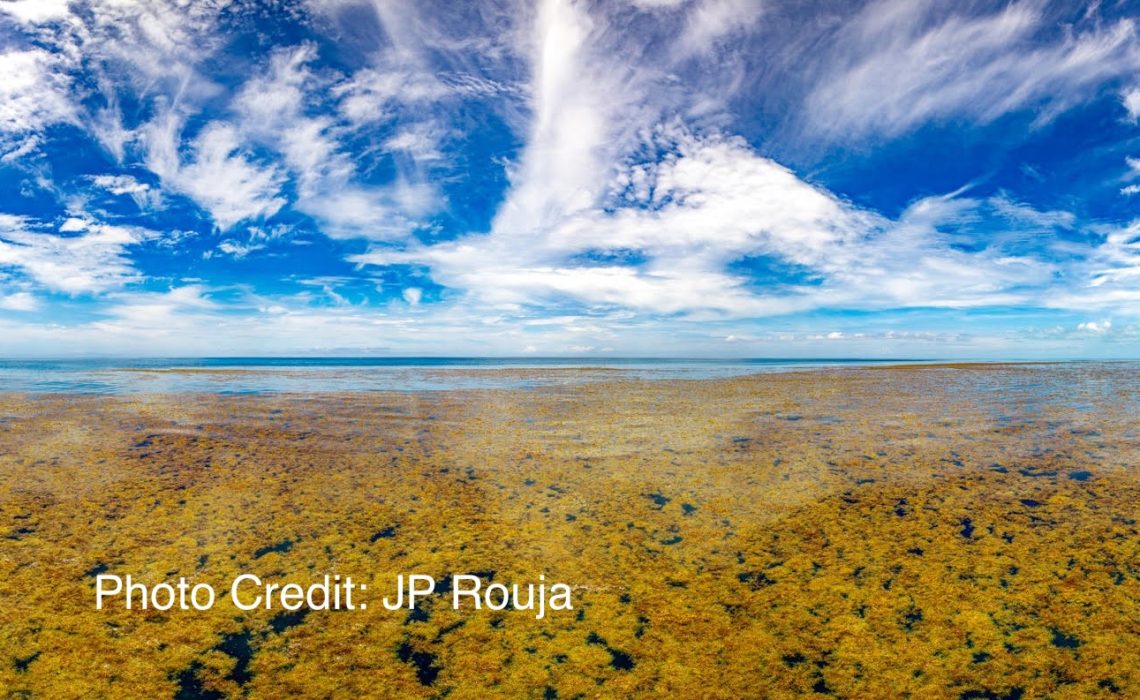
Sargasso Sea Ecosystem and Why It’s So Important
I’m beginning to think I really should have tried harder in Geography at school! Why? Well, when a colleague mentioned the Sargasso Sea, I had absolutely no idea where it was or why I should be so interested in it. Let me tell you, since last week that has certainly changed. Whilst not claiming to have got anything close to being an authority on its importance, a chance invitation to an expert meeting, had me rubbing shoulders with some pretty key people that definitely are! Here’s what I learnt…
(Audio intro)
But first let’s look at where the Sargasso Sea is. That little dot in the middle of the small red circle is Bermuda, with that red first circle marking waters under its control. The bit between the two red circles, that’s largely classed as the Sargasso Sea, in the North Atlantic Ocean. It’s a high sea. I had to look that up! That means it’s open ocean and not under the protection of any individual national jurisdiction. That doesn’t mean it’s totally unprotected though. The ‘United Nations Convention of the Law of the Sea‘ sets out some general guidelines on how to conduct yourself on the high seas – it belongs to ‘no-one’ and ‘everyone’.

Why Is The Sargasso Sea Important?
Two million square miles of ocean – I can’t visualise how vast that is – a floating bed of Sargassum seaweed and the only named sea on our earth that doesn’t have a land boundary.
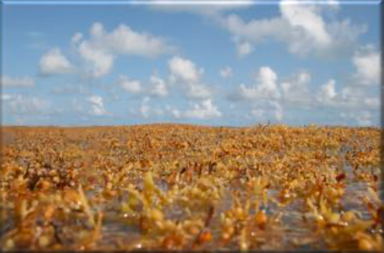
The ‘Golden Floating Rainforest’
Sylvia Earle, Explorer
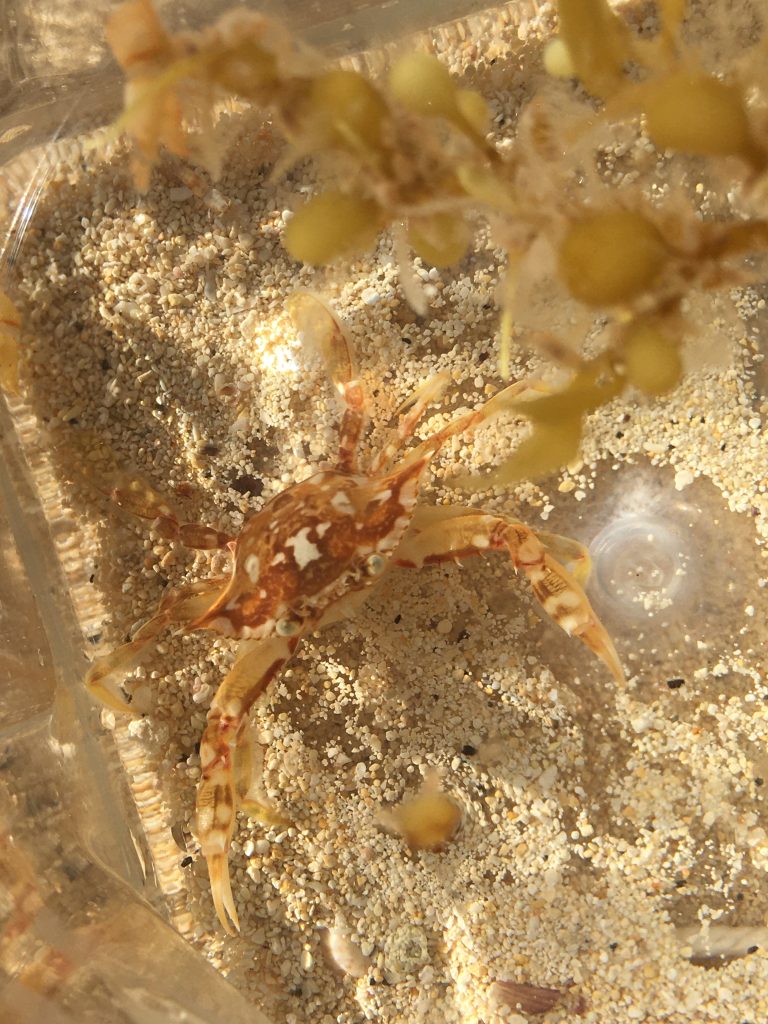
You can see why it’s called this, well the golden part that is, I will come on to the ‘rainforest’ analogy shortly. Ten species have specially adapted themselves to live within the seaweed, like this very cute Sargassum Swimming Crab, but it’s crucial for many other endangered creatures like the American and European eel that make it their only known spawning grounds. By the nature of its floating density, this critical nursery habitat protects juvenile fish and turtles that take refuge to grow, is host to multiple varieties of pelagic fish, with sperm whales and humpbacks migrating through it. You would find swordfish, tuna, sharks, dolphins and rays migrating through it or inhabiting it.
If that is not enough, it plays a disproportionately large role in carbon sequestration with respect to global oceans. The Sargassum floats near the surface, rather than typically being attached to the bottom of the ocean. During the summer months it releases carbon dioxide from the sea surface to the atmosphere but then absorbs more than it has released during the winter, with a strong net sink into the ocean – the circulating current of the North Atlantic Gyre comes into play here.
It’s our ‘rainforest’ in the ocean, teaming with wildlife and absorbing more carbon dioxide than it produces.
Do you enjoy my writing?: Always optional, Donating even a small amount occasionally enables me to continue to be another voice for the environment, supporting organisations focussed on conservation and restoration through my blogs, video’s, giving my time on committees, raising awareness. Click on the Donate button, top right hand side of the page for more information on how I am contributing and why your donation counts.
So What’s The Problem?
That’s what the Sargasso Sea Commission has been working on for the last decade – a partnership between a group of independent scientific experts and ten governments, assigned to be its stewards following the signature of the Hamilton Declaration on Collaboration for the Conservation of the Sargasso Sea. They have been researching, examining, monitoring and pursuing conservation measures of this iconic sea.
The result of that work has been impressive, from engagement with multiple international organisations, regional fisheries management organisations, International Maritime Organisation, the UN, numerous conservation commissions, UNESCO, protection agencies for turtles… the list goes on. All necessary to engage international support and action, some of the results of which are the closure of seamounts to bottom trawling, eel workshops, draft MOUs and a lot of knowledge gained about the importance of this sea.
Potential Human Impact
There are indications of potential negative human effects. Its position, in the circulating currents of the North Atlantic Gyre, means it can be impacted by a concentration of pollutants including pollution such as discarded fishing gear and spills from international shipping. Over-fishing is likely to be at least a future issue and it hosts many of the busiest international shipping routes. Climate change may alter the currents and the ramifications of that are not yet known.
What’s Next?
Fortunately the Sargasso Sea Commission has received two separate but complementary grants, from the Global Environment Facility (GEF) and the French Facility for Global Environment (FFEM). Both grants focus on protection and management of the Sargasso Sea, with the FFEM grant encompassing the Thermal Dome in the Eastern Tropical Pacific Ocean. This funding will allow an in-depth diagnostic analysis of the Sargasso Sea, building on the important work already carried out. It’s worth noting here that the GEF project, implemented by UNDP and executed by IOC Unesco, is a child project of the Common Oceans Programme and it recognises both the biological and the economical significance of this ocean and it looking to strengthen the stewardship through co-operation. Which, importantly, is why stakeholder participation and communication is VERY high on their agenda.
What is unique about this work is that the commission will complete the first socio-ecosystem diagnostic analysis (SEDA) for a high seas system
Lucky me, I was invited to attend the second Stakeholder meeting where I met the Secretariat and Project Communications Officer for the Sargasso Sea Commission, Fae Sapsford and learnt so much about the work they are carrying out.
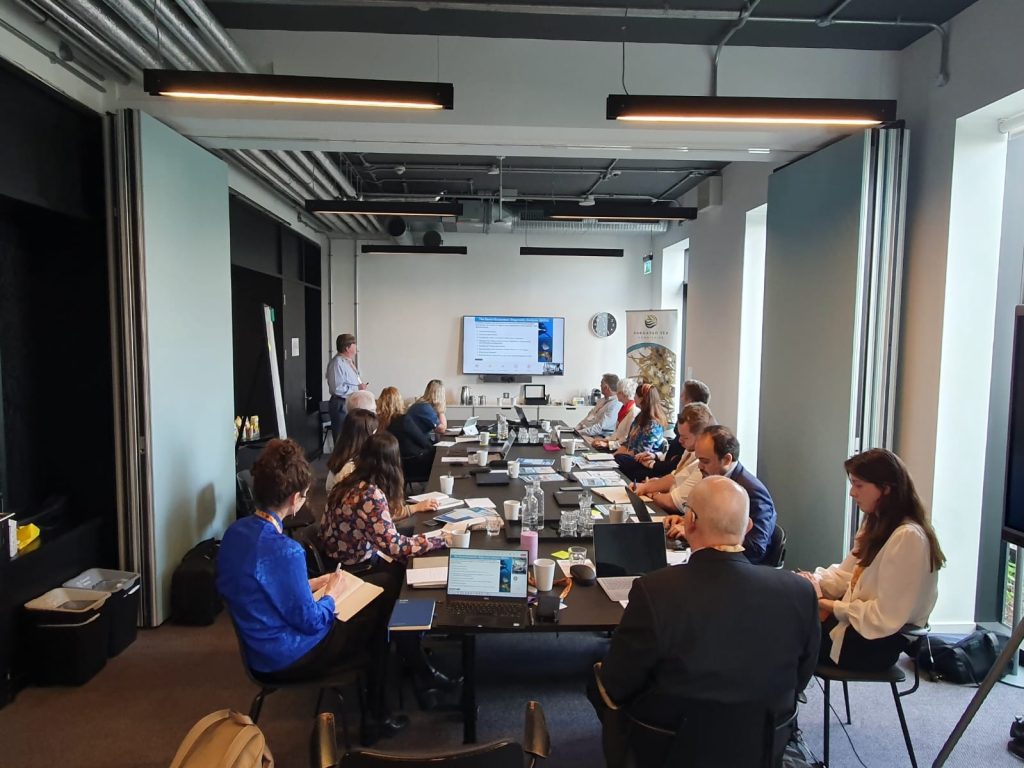
This meeting was with the Shipping Industry and was well attended with good representation from both the relevant government bodies and the primary private sector organisations and membership bodies, all key bods and very interesting to hear their points of view.
The Blue Economy
NLA International, brought these parties together, under their role of championing Blue Economy solutions – using innovative technologies, tools and processes to create sustainable ocean environments for the people and economies that depend upon them. Emphasis on the ‘sustainable’, meaning they look at how restoration and then conservation of our oceans benefits all parties.
Despite seemingly belonging to ‘no-one’, the Sargasso Sea’s future state is inextricably linked to Earth’s health and the associated global benefits.
Meeting Observation
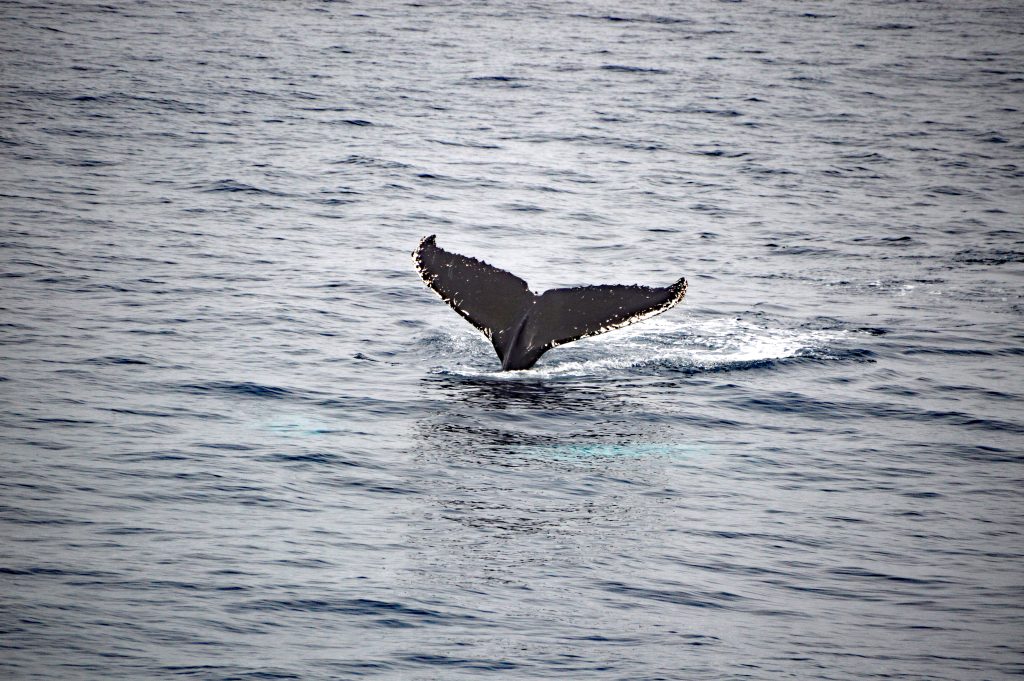
One of NLAI’s core beliefs, is really looking at the ‘value’ of a particular part of the ocean, that’s not the short term value of for example how much you can get for your boat load of Tuna that you have just caught, or that unfortunate whale that has just been slaughtered! It’s looking longer term for example, at the lifetime value of our whales with respect to the carbon they sequester. If you haven’t seen this TED talk by Ralph Chami ‘What a living whale is worth – and why the economy should protect nature’ then give it a watch, it will explain what I am talking about and hopefully provide a paradigm shift in your thinking too.
My Takeaway From The Stakeholder Meeting: Such willingness by all parties to openly discuss and contribute to this first collaboration was impressive. So was the number of ecological and environmental measures that have already been put in place by the Shipping industry to protect our seas – I hadn’t expected that.
Conclusion
There is a lot more work to do! This meeting was a springboard for ongoing work with the Shipping Industry and just one of the many sets of stakeholders that need to be involved in the discussions in order for the project outcome to be successful. From climate and oceanography experts, to tourism/cruise and recreational users, to waste and carbon sequestration entities and everything in-between.
Watch this space for more on the Sargasso Sea from me.
Additional Resources/Links:
The SARGADOM Project
Sargasso Sea Commission, Summary Science and Supporting Evidence Case report
TED Talk: What A Living Whale is Worth and Why The Economy Should Protect Nature
